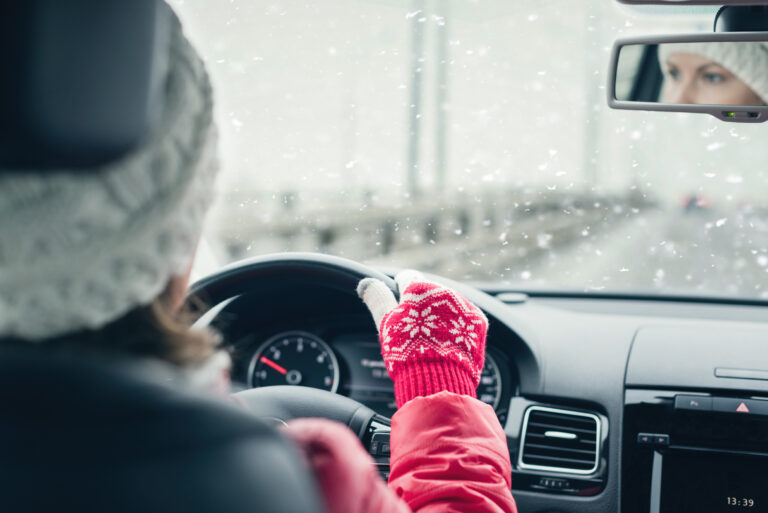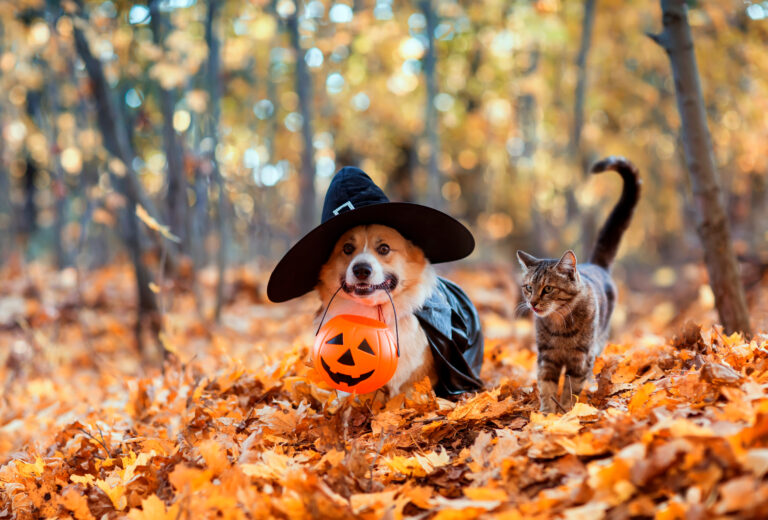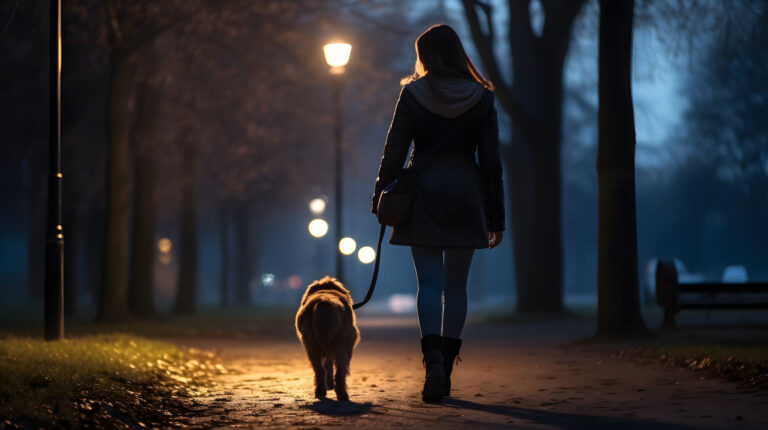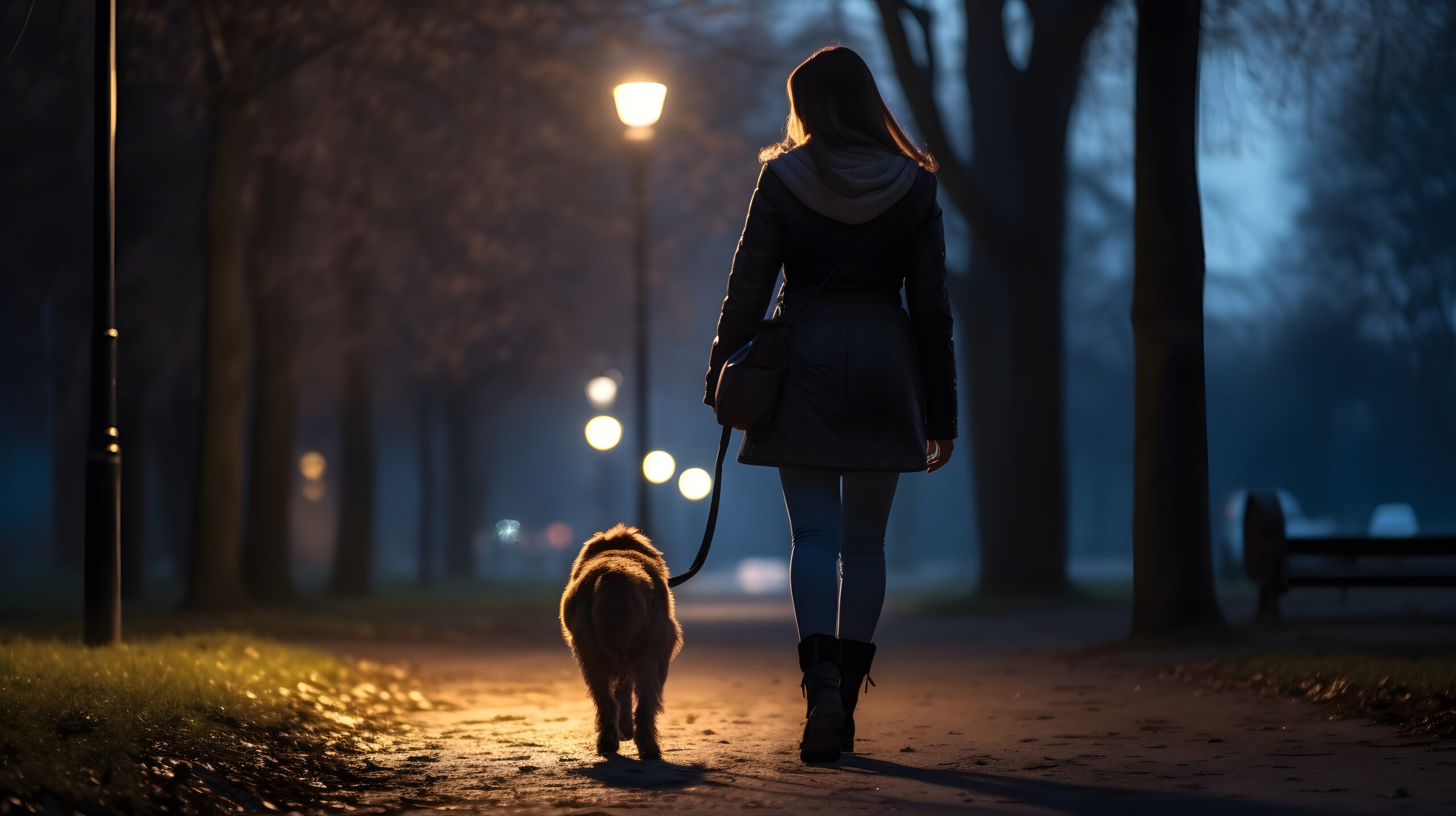
6 Tips for Walking your Dog Safely in the Dark
As the nights draw in the sun will set earlier and you may find yourself walking your dog in the dark. While this can be a peaceful and enjoyable experience, it also comes with its own set of challenges. Here are some tips to ensure you and your furry friend stay safe and have fun during your evening strolls.
Remember, Pet insurance can provide peace of mind during winter walks in the dark, where your dog may be at a higher risk of accidents. Get yourself a quote today.
Make Yourself as Visible as Possible
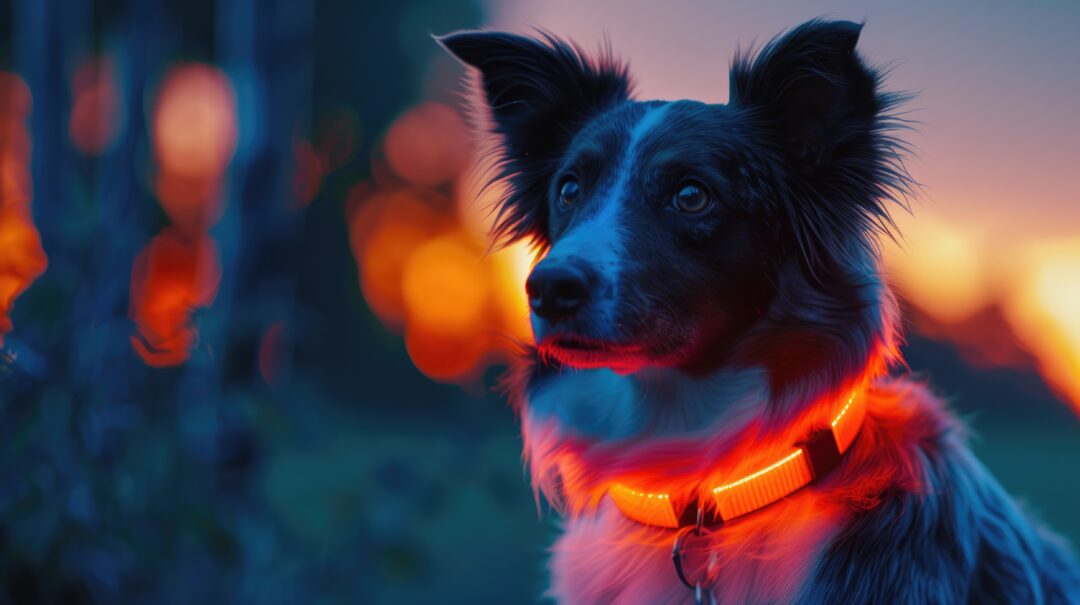
It’s important to make sure you and your dog can be clearly seen while walking in the dark. This avoids any run ins with cars or other pedestrians. Fit your dog with a reflective collar or harness at the very least and a reflective lead is also a helpful step. You can also wear reflective clothing to make you more visible, just as you would if you were cycling.
LED lights attached to your dog’s collar or harness is another great way to draw attention to your presence. These lights are highly visible and can help you keep track of your dog in low-light conditions. Don’t forget to carry a torch or wear a headlamp to illuminate your path. This will help you avoid obstacles and spot any potential hazards.
The limited visibility in winter can increase the chances of your dog being involved in road accidents, make sure you have pet insurance, which may help cover the cost of any emergency treatments.
Stay on Familiar Routes

Choose routes that are well-lit and familiar to you. This reduces the risk of getting lost or encountering unexpected obstacles. While it might be tempting to explore new routes, it’s safer to stick to areas you know well, especially in the dark. Consider walking with someone else if possible. This can give you extra support if you or your pet gets into difficulty.
Keep your Dog on a Lead
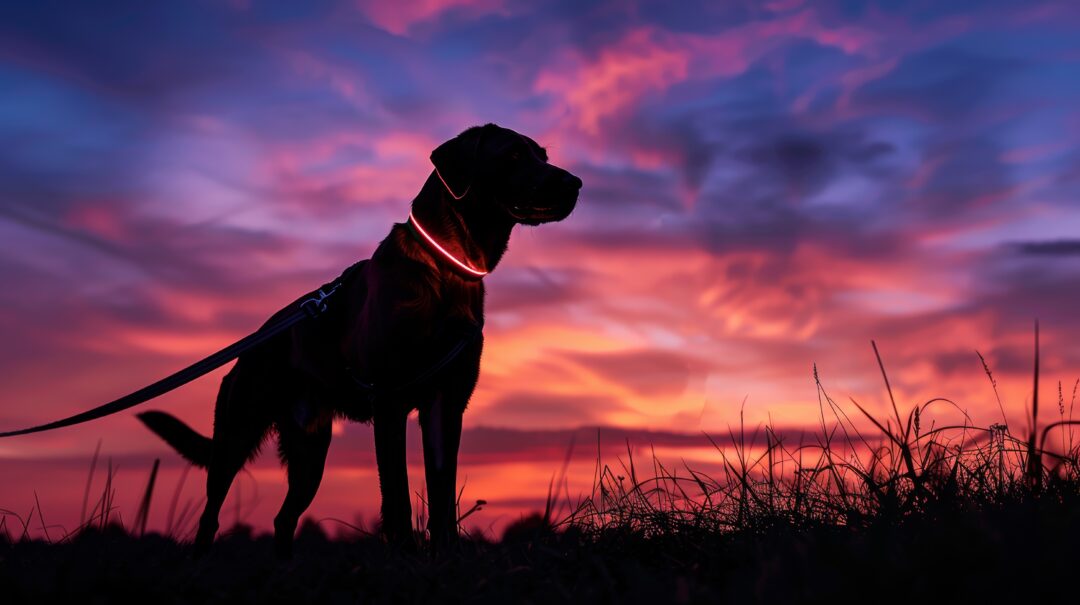
Keep your dog on a lead, even if they are well-trained. This prevents them from running off if they get spooked and encountering dangerous situations where they could get lost or stolen. Take a read of our blog on How to protect your dog from being stolen for more safety tips.
Get your dog an ID tag with your contact information, so they can be returned to you quickly and easily if you do lose them in the dark. Stay aware of your surroundings, watching out for other animals, cyclists, and potential hazards. Winter walks often lead to encounters with other dogs or wildlife, where unexpected injuries could occur. An appropriate pet insurance policy means you won’t face hefty vet bills.
Dress for the Weather
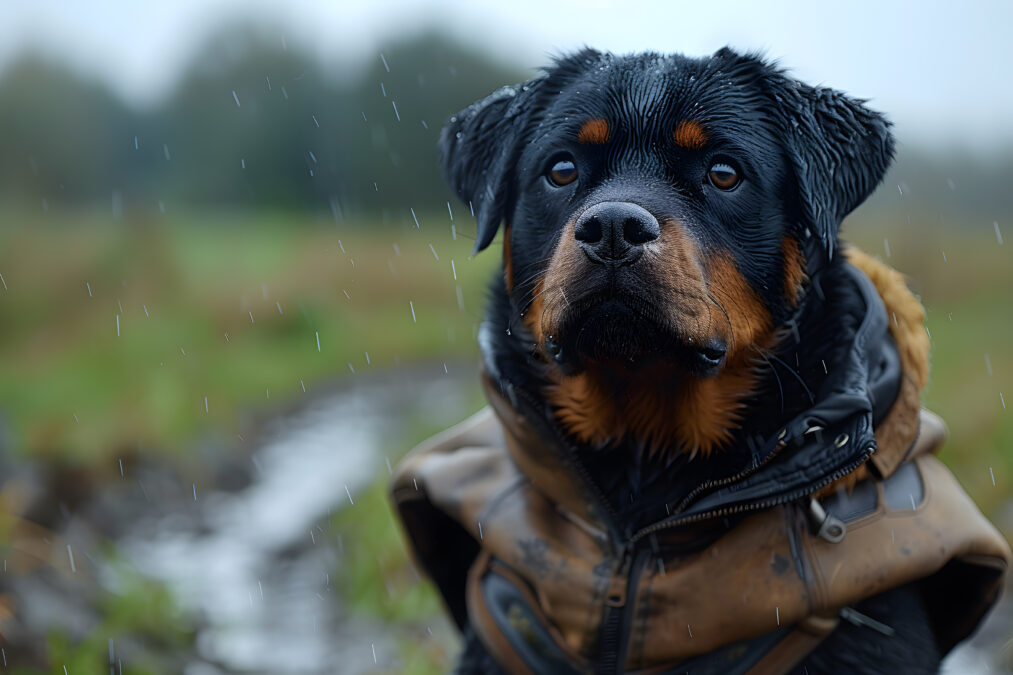
As the temperatures drop, make sure both you and your dog are dressed appropriately. The PDSA recommends dogs with thin or fine fur like Greyhounds should have a coat for cold walks. This also applies to dogs that are very young, underweight, old or unwell, as they feel the cold much faster. Pet insurance is essential as it can cover not only accidents but also winter-related illnesses like hypothermia and respiratory issues during cold, dark walks.
Autumn and winter weather can be unpredictable in the UK. Waterproof jackets and boots for both you and your dog can make the walk more comfortable.
Plan Your Walks

Try to schedule your walks during twilight or early evening when there is still some natural light. If it’s particularly dark or cold, consider shorter, more frequent walks instead of one long walk.
Make Sure Your Dog is Trained With Simple Commands
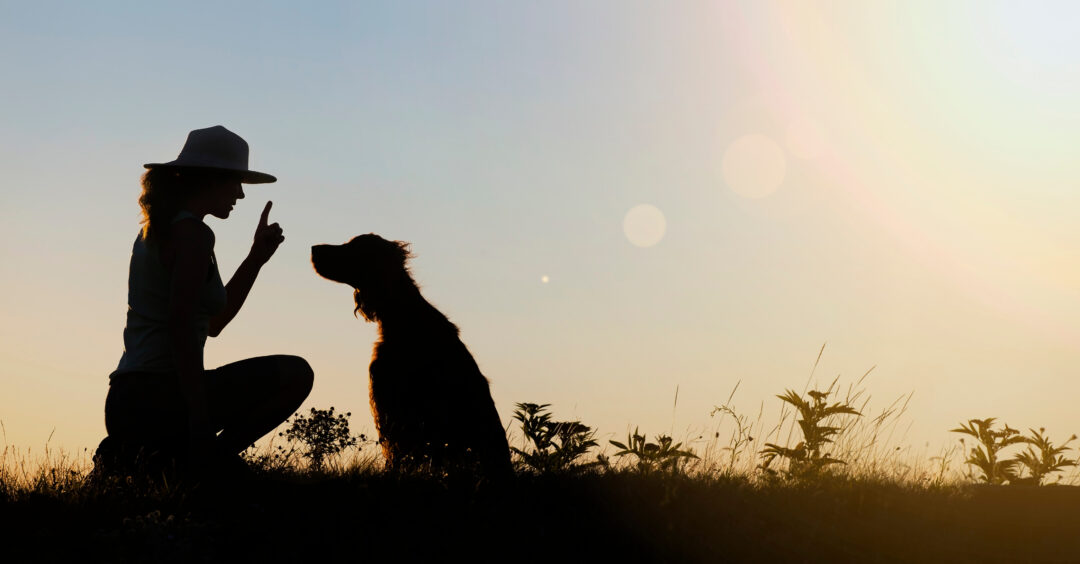
If you can train your dog with basic commands like “sit,” “stay,” and “come”, walks will be a lot easier. These can be crucial in preventing accidents, especially near dark roads. It’s important to regularly practice recall training so your dog responds promptly when called, even when they are in distracting environments.
Training doesn’t have to be boring! Make it into a fun enrichment activity for your pet. Check out our 4 Activities to keep your pet entertained.
Walking your dog in the dark can be a safe and enjoyable activity with the right preparation. By following these tips, both you and your furry friend can have a pleasant and secure experience as the nights get darker.
We understand that often things don’t go as expected. Which is why Pet Insurance is so important. Get a quote today!
